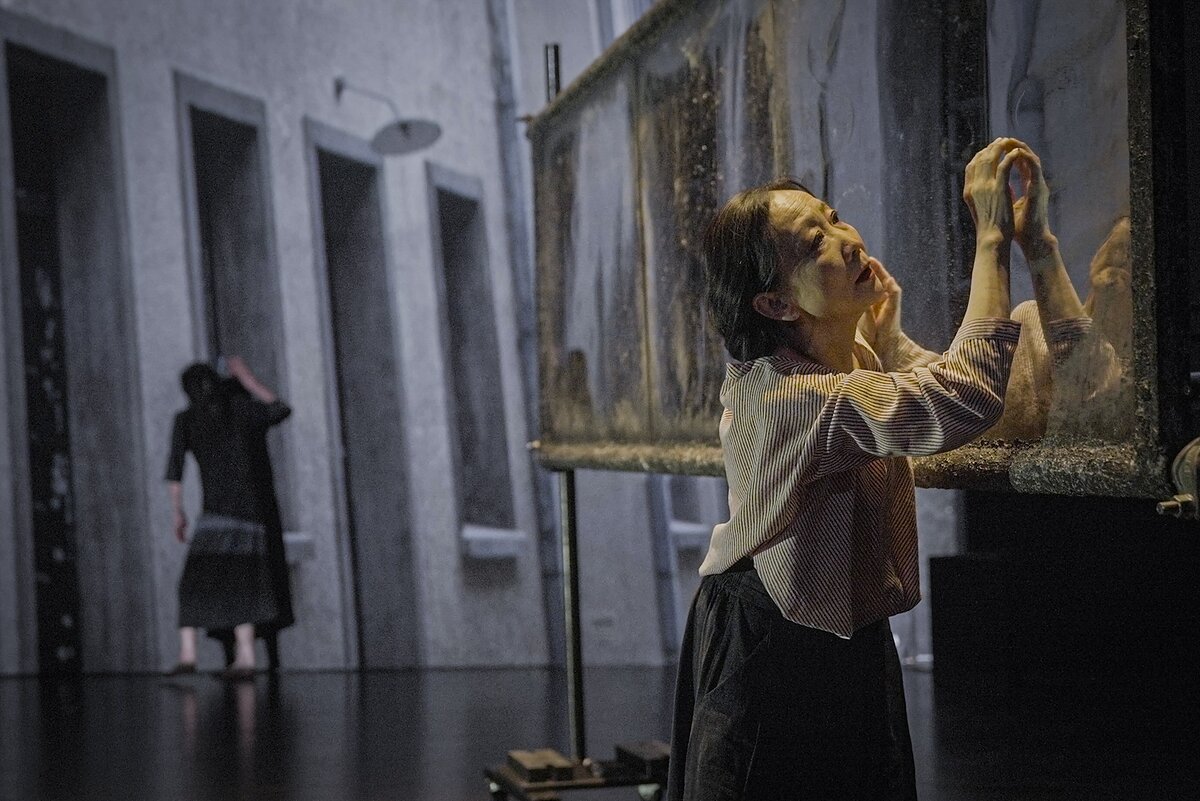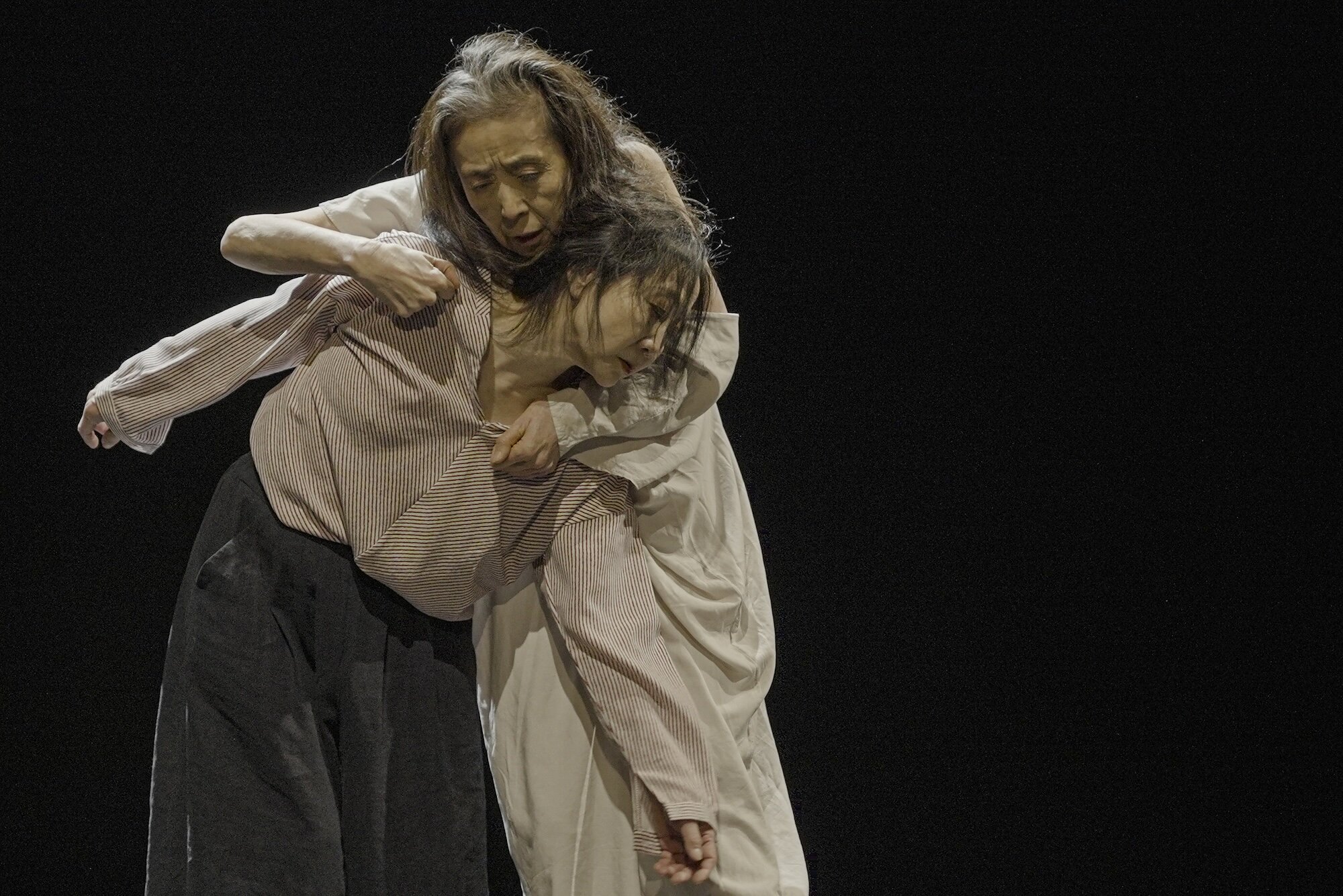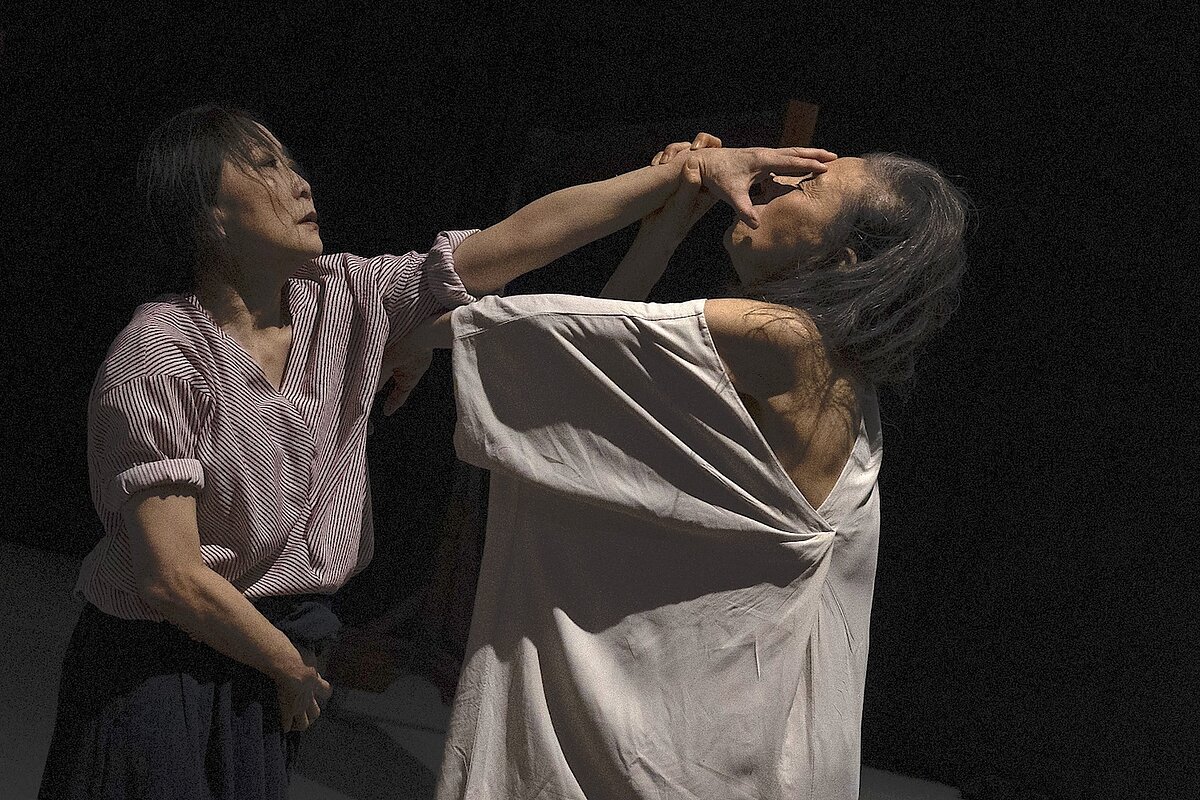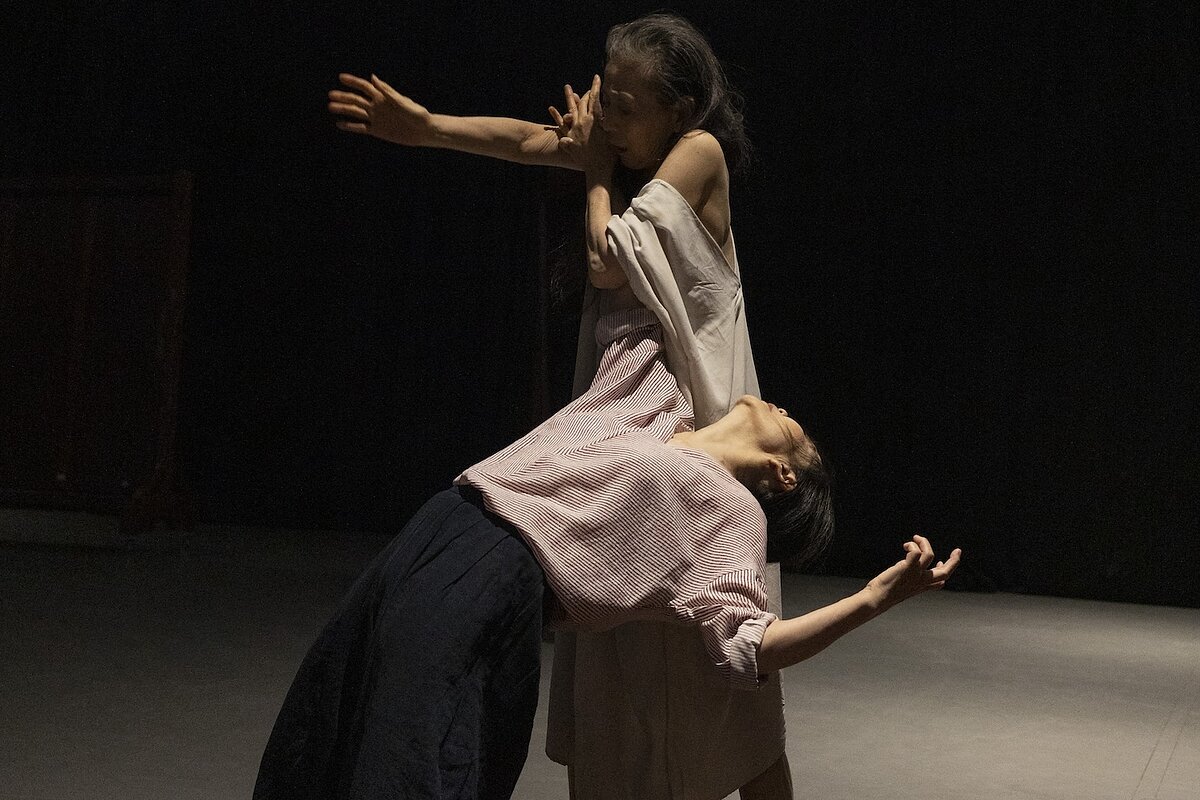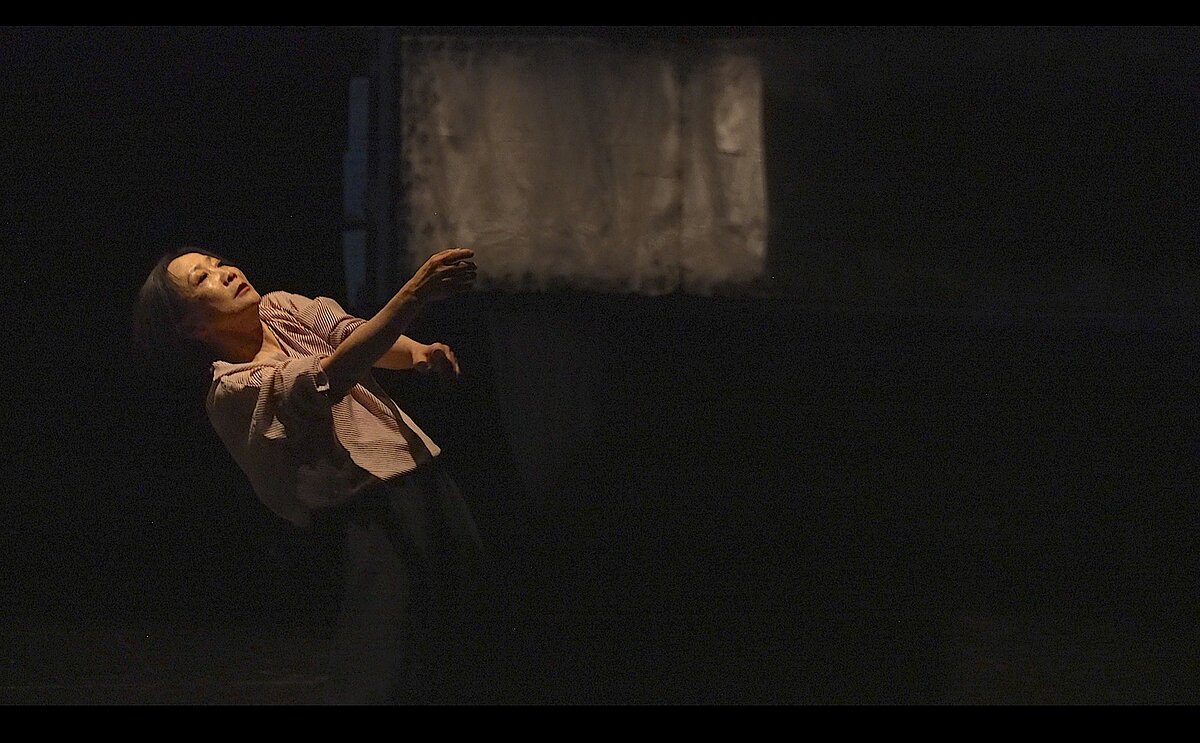Eiko Otake and Wen Hui on “What is War”
During their collaborative performance What is War (2025), one of the objects that the artists Eiko Otake and Wen Hui manipulate onstage is a large, wheeled panel whose shape is reminiscent of a blackboard or a protest banner. Its surface is a grimy, warped mirror. Otake and Hui push the panel around, and at times – when they aren’t trudging, stumbling, flailing, and crawling around the stage, contorting their bodies around and against each other – they perform slow, tense solo choreographies in front of it. The mirror doubles their faces and torsos, echoing their movements and monologues throughout the hour-long program.
Originally co-commissioned by the Walker Art Center, CAP UCLA, Jacob’s Pillow, and Colorado College’s Dance and Theater Department, What is War draws from Otake’s experience coming-of-age in post-World War II Japan, and Hui’s memories of growing up in China during its Cultural Revolution. Employing visual, spoken, and written language together, the choreographers excavate their respective family histories to weave solidarities across geopolitics, histories, authoritarianism, and war. It will be performed as part of Brooklyn Academy of Music’s Next Wave 2025 programming from October 21 to 25.
Ahead of its run at BAM, I spoke with Otake and Hui. The two have been friends since 1995 and collaborators since 2020, and evinced a kind of artistic and interpersonal chemistry that reminded me of the relationship one might have with one’s own reflection. They are by turns intimates, antagonists, strangers, and stewards of one another. We discussed the inspiration and process of creating What is War, war’s impact on the body and language, and being a bad student to be a good historian.
EO: No Rule is Our Rule is all about private life. To go back to your original question about the TV, in the very beginning of the pandemic, everybody was stricken by fear, realizing that your private life was so connected to public life. We were watching and recording TV programs, not only about the Second World War but also about the pandemic. There was a performance of heroism going on on Chinese national television: “We will conquer this. We will save everyone.”
I have also made [work of] me dancing alone in Fukushima [A Body in Fukushima (2014–19)]. I didn’t have an audience there, but I was dancing, and there was a photographer [William Johnston]. Is that a private performance? Is it a public performance? It’s both. The process of editing [the documentation] became a performance, and then I brought Fukushima and my dancing in Fukushima to the public by way of photo exhibitions, video installations, and films. You can call what I’ve done private because only one photographer and myself were present. But there is also another aspect. Onstage when we speak, are we doing theater? No. We are talking to the audience. In a way, we are being our private selves.
What is War will be presented at Brooklyn Academy of Music from October 21 to 25.
—Jenny Wu is the US-based associate editor of ArtReview. She lives in New York and writes about the city in her column, ‘Notes from New York’. She teaches writing in the visual arts department at Brooklyn College CUNY, and her criticism and essays have appeared in newspapers, magazines, artists’ books, and catalogues. Her recent projects include curating performances and experimenting with writing as performance.
